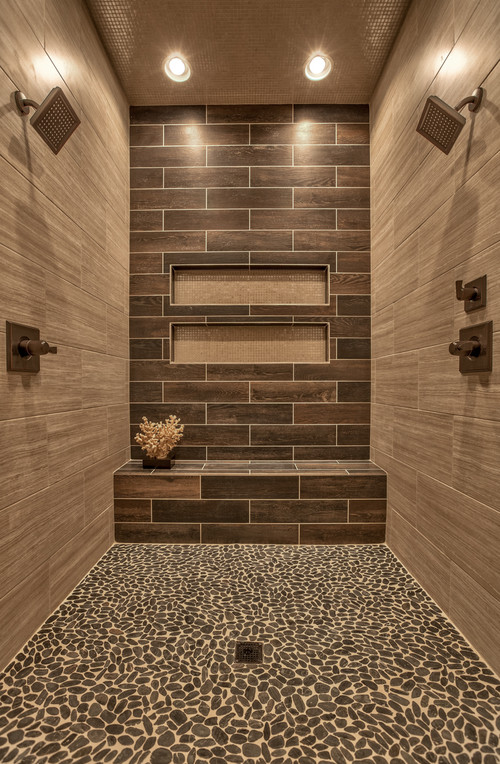Start your lawn care by following our season-by-season lawn maintenance calendar. Get a barefoot-worthy lawn and ensure your home has curb appeal.
Early Spring
Like so many maintenance jobs, everything goes smoother -- and you’ll get better results -- with proper preparation. Early spring is the time to get ready for lawn-growing and mowing season.
Related: How to Bring Back Your Lawn After Winter Damage
Sharpen mower blades to ensure clean cuts. A dull blade tears the grass, leaving jagged edges that discolor the lawn and invite pathogens.
Sharpen mower blades once each month during grass-cutting season. Have a backup blade (about $20) so that a sharp one is always on hand.
Tune up your mower with a new sparkplug ($3 to $5) and air filter ($5 to $10). Your mower might not need a new sparkplug every season, but changing it is a simple job, and doing it every year ensures you won’t forget the last time you replaced your sparkplug.
Buy fresh gas. Gas that’s been left to sit over the winter can accumulate moisture that harms small engines. This is especially true for fuel containing ethanol, so use regular grades of gasoline.
If you need to dump old gasoline, ask your city or county for local disposal sites that take old fuel.
Clean up your lawn. Time to get out the leaf rakes and remove any twigs and leaves that have accumulated over the winter. A thick layer of wet leaves can smother a lawn if not immediately removed in early spring. Cleaning up old debris clears the way for applying fertilizer and herbicides.
Spring
Early Summer
Summer
Early Fall
Fall
Spring
Depending on your weather, your grass will now start growing in earnest, so be ready for the first cutting. Don’t mow when the grass is wet — you could spread diseases, and wet clippings clog up lawn mowers.
Fertilizing: Both spring and fall are good times to fertilize your lawn. In the northern third of the country, where winters are cold, fertilize in fall — cool weather grasses go dormant over winter and store energy in their roots for use in the spring.
For the rest of the country, apply fertilizer just as your grass begins its most active growth. For best results, closely follow the application directions on the product. You’ll spend about $50 to $75 per application for an average 1/4-acre lot.
Aeration: Aerating punches small holes in your lawn so water, fertilizers, and oxygen reach grass roots. Pick a day when the soil is damp but not soaked so the aeration machine can work efficiently.
Related: More about lawn aeration
Pre-emergent herbicides: Now is the time to apply a pre-emergent herbicide to prevent crabgrass and other weeds from taking root in your lawn. A soil thermometer is a handy helper; you can pick one up for $10 to $20. When you soil temperature reaches 58 degrees — the temperature at which crabgrass begins to germinate — it’s time to apply the herbicide.
Early Spring
Early Summer
Summer
Early Fall
Fall
Early Summer
Watch out for grubs: Warm weather means that grub worms, the larvae stage of June, Japanese, and other beetles, start feeding on the tender root systems of lawns. Affected lawns show browning and wilting patches.
To be certain that the culprits are grubs, pull back the sod and look for white, C-shaped grubs. If you see more than 10 per square foot, your lawn should be treated with a chemical pesticide.
Milky spore is an environmentally friendly way to control some species of grubs. When using insecticides, read and follow all label directions, and water the product into the soil immediately. Cost is around $50 to $75 per application.
Grass-cutting tip: Your grass is starting to grow fast, and you might even be cutting more than once a week to keep up. To keep grass healthy, mow often enough so you’re removing no more than 1/3 of the grass blade.
Pesky weeds: Weeds that have escaped an herbicide application should be removed with a garden fork. Use a post-emergent herbicide only if you think the situation is getting out of hand.
Check out our guide to some common types of weeds and tips on how to get rid of them.
Early Spring
Spring
Summer
Early Fall
Fall
Summer
Here’s a good mantra to guide you through the heart of grass-mowing season: The taller the grass, the deeper the roots, the fewer the weeds, and the more moisture the soil holds between watering.
With that in mind, here’s how to ensure a healthy, green lawn:
- Set your mower blade height to 3 inches.
- Deep and infrequent watering is better for lawns than frequent sprinkles, which promote shallow root growth. In general, lawns need about 1 inch of water per week to maintain green color and active growth.
Lawns that receive less than that will likely go dormant. That’s okay, the grass is still alive, but dormant lawns should still receive at least 1 inch of water per month. Your grass will green up again when the weather brings regular rains.
- To check the output of a sprinkler, scatter some pie tins around the yard to see how much water collects in a specific length of time. Having a rain gauge ($5 to $20) will help you keep track of how much water the lawn receives naturally.
- At least once each month, clean underneath your mower to prevent spreading lawn diseases.
- Although it’s OK to leave grass clippings on the lawn where they can decompose and nourish the soil, large clumps of clippings should be removed. Regularly rake up any leaves, twigs, and debris.
If your grass seems to be stressed out, check out our advice on what to do if your lawn is turning brown.
Early Spring
Spring
Early Summer
Early Fall
Fall
Early Fall
The best time to patch bare or thin spots is when the hot, dry days of summer have given way to cooler temps. Follow these simple steps:
1. Remove any dead grass.
2. Break up the soil with a garden trowel.
3. Add an inch of compost and work it into the soil.
4. Add grass seed that’s designed for shade or full sun, depending on the area you’re working on. Spread the seed evenly across the bare patch.
5. Use a hard-tooth rake to work the seed into the soil to a depth of about half an inch.
6. Sprinkle grass clippings over the patch to help prevent the soil from drying out.
7. Water the area; you’ll want to keep the patch moist, so lightly water once a day until the seed germinates and the new grass gets about one inch tall.
Early Spring
Spring
Early Summer
Summer
Fall
Fall
Your main job in fall is to keep your lawn free of leaves and other debris. You can use a mulching mower to break up leaves and add the organic matter to your soil, but be sure to clean up any clumps so they don’t kill the grass.
In the northern one-third of the country, now is the time to fertilize your lawn. Your grass will store the nutrients in its roots as it goes dormant over the winter, and your lawn will be ready for a jump start when spring warms the ground.
This is also the time to clean up your garden.
Early Spring
Spring
Early Summer
Summer
Early Fall











